Komatsu Deal Includes Commuter Rail Station
City would have option to buy site for Walker's Point station for a KRM line.
The $285 million Komatsu proposal to build a new manufacturing facility and office building in Milwaukee’s Harbor District includes a purchase option for the city to buy a .79-acre site as a commuter rail station.
The deal, believed to the largest urban manufacturing development actively proposed in the United States, relies on a number of moving pieces to assemble the land on the south side of E. Greenfield Ave. and bordering Milwaukee’s inner harbor for Komatsu Mining, now based in the suburb of West Milwaukee. The company would purchase most of a 45.96-acre site from We Energies and a substantial amount of a city-owned 13.56-acre site. Komatsu Mining, which is a division of the huge Komatsu company headquartered in Tokyo, would pay $152,000 per acre for the two parcels as part of the development of a 410,000-square-foot manufacturing facility, 170,000-square-foot office building and 20,000 square-foot museum/training center.
We Energies acquired its land as part of the cleanup process for Solvay Coke. The fuel production company shuttered the plant in 1982, leaving many of its past customers on the hook for the environmental cleanup. The electric utility purchased the site in 2017 and is working on a substantial environmental remediation process that could cost as much as $40 million, according to Department of City Development Commissioner Rocky Marcoux.
The triangular site draws its shape from the two different railroad lines that border it, but don’t connect. Canadian Pacific has a heavily used mainline to the west, used by Amtrak and a number of freight trains. Union Pacific owns the former Chicago & North Western Railway tracks to the east that are now infrequently used, but once led to the old Lakefront Depot.
“This could be a potential transit station for the Kenosha-Racine-Milwaukee commuter rail,” said DCD economic development specialist Dan Casanova at Tuesday’s public hearing on the deal. “It’s also a point where the two railroads could potentially connect.” The connection would be essential to allow trains running from downtown Kenosha and Racine on the Union Pacific tracks to access the Milwaukee Intermodal Station. The two lines currently come within a couple feet of each other when they cross E. Washington St. on the same bridge just north of the proposed station site.
But even if the city can get the two railroads to connect their tracks, getting a commuter rail train line running remains a significant hurdle. The proposed KRM line was canceled by the Republican legislature and then newly-elected Governor Scott Walker in 2011. The proposed line, which still is proposed in the Southeastern Wisconsin Regional Planning Commission‘s Vision 2050 plan, was intended to link the downtowns of the three cities as well as a number of suburban communities.
The KRM proposal, estimated to cost $198 million in 2008, relies on a number of infrastructure improvements along the route. The biggest item, the Muskego Yard Bypass intended to divert freight trains away from the downtown Milwaukee station, is estimated to cost $44 million. The good news, for KRM advocates, is that the bypass would also need to be built as part of the expansion of the Amtrak Hiawatha Service from seven to 10 daily roundtrips.
The proposal has the support of Komatsu. Its surface mining president John Koetz told the City Plan Commission Monday that employees have reacted positively to news that the company hopes to move in 2021. “They’ve been very excited about the potential commuter rail, the riverwalk, biking,” said Koetz. A stop at E. Greenfield Ave. would also serve UW-Milwaukee’s School of Freshwater Sciences, Wangard’s Freshwater Plaza development, Rockwell Automation and a host of nearby employers and new housing developments.
The line, which would sync up with Illinois’ Metra system in Kenosha, would also include a stop in Bay View at the intersection of E. Lincoln Ave. and E. Bay St. according to a 2009 draft environmental impact statement.
In addition, then-Rep. Pedro Colon proposed an E. National Ave. station in 2009 when the legislature’s Joint Finance Committee debated the proposal. But if the Greenfield Ave. parcel of land was to become a station for a KRM line, the National Ave. stop wouldn’t be needed.
The KRM line, which was originally planned to begin operating in 2016 with help of a federal grant, would include 14 daily round trips. According to the 2009 plan, operations were to be supported by a rental car tax.
302 E. Greenfield Ave.
Komatsu Site Plans
If you think stories like this are important, become a member of Urban Milwaukee and help support real, independent journalism. Plus you get some cool added benefits.
More about the Komatsu South Harbor Campus
- Construction Beginning On Milwaukee’s Largest-Ever Riverwalk Expansion - Jeramey Jannene - Jun 20th, 2025
- Eyes on Milwaukee: City Expands Vision For Harbor District Riverwalk - Jeramey Jannene - Sep 16th, 2022
- Eyes on Milwaukee: Inside Komatsu Mining’s Massive New Harbor District Campus - Jeramey Jannene - Jun 27th, 2022
- Eyes on Milwaukee: Planned Riverwalk Lets You Touch the Water - Jeramey Jannene - Nov 22nd, 2021
- Friday Photos: South Harbor Campus Rising Over Inner Harbor - Jeramey Jannene - Apr 30th, 2021
- Eyes on Milwaukee: SmithGroup Will Design Harbor District Riverwalk - Jeramey Jannene - Apr 30th, 2021
- Transportation: State To Fund Road, Rails for Komatsu - Jeramey Jannene - Mar 9th, 2021
- Eyes on Milwaukee: Who Wants To Design Harbor Riverwalk? - Jeramey Jannene - Mar 2nd, 2021
- Transportation: Railroad Expansion in the Harbor District - Jeramey Jannene - Feb 17th, 2021
- Friday Photos: Komatsu Mining Campus Takes Shape - Jeramey Jannene - Nov 6th, 2020
Read more about Komatsu South Harbor Campus here
Eyes on Milwaukee
-
Church, Cupid Partner On Affordable Housing
 Dec 4th, 2023 by Jeramey Jannene
Dec 4th, 2023 by Jeramey Jannene
-
Downtown Building Sells For Nearly Twice Its Assessed Value
 Nov 12th, 2023 by Jeramey Jannene
Nov 12th, 2023 by Jeramey Jannene
-
Immigration Office Moving To 310W Building
 Oct 25th, 2023 by Jeramey Jannene
Oct 25th, 2023 by Jeramey Jannene


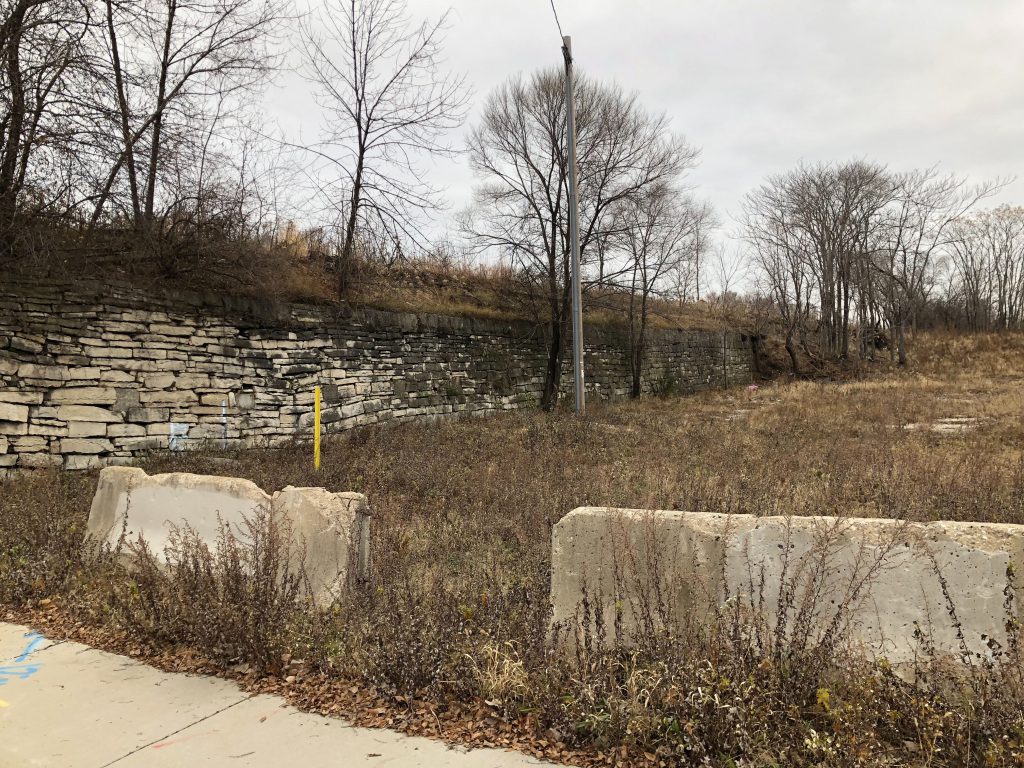
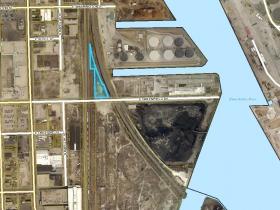
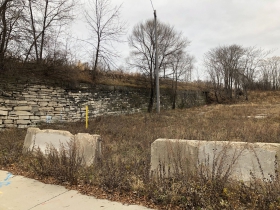
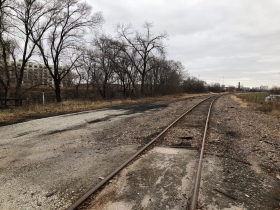
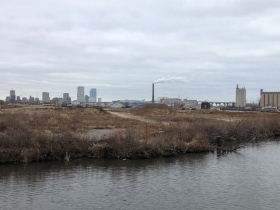
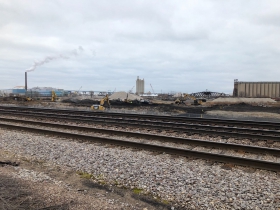
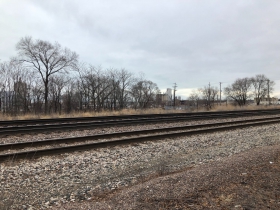
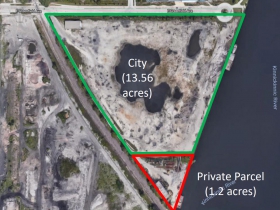
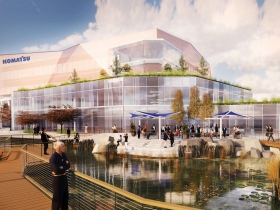
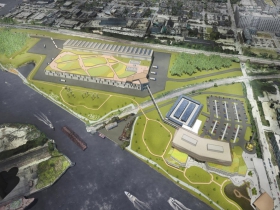
















Oh HELL YES. Strengthening rail transit links to our neighbors along Lake Michigan (beyond the existing Amtrak connections) is a fantastic step forward for Milwaukee and for Wisconsin.
I have two questions:
• When did those two rail lines stop connecting? From the time the old lakefront station closed (1965??) until 1971 (when Amtrak started), passenger trains from Chicago via Kenosha and Racine (using the KRM tracks) operated into Milwaukee Union Station (now called the Intermodal Station). So obviously there were connecting tracks back then; when did they disappear?
• Is this site really the “largest urban manufacturing development ever proposed in the United States”? Is it even the largest manufacturing development in Milwaukee’s history?
The article mentions two parcels measuring 45.96 and 13.56 acres, totaling under 60 acres. Unless there’s some other land involved, this site is less than half as large as Milwaukee’s old A O Smith plant stretching from 35th and Capitol down to 27th and Townsend. By my calculations, that plant occupied about 160 acres.
On the connection, I don’t have a date. I was going to go through old aerial images to narrow it down, but wasn’t sure the resolution would make it visible.
As for the size, according to Marcoux and Koetz, it is the largest active proposal.
As usual, great reporting on issues affecting our city.
Any related news on this project including extending the bicycle trail from downtown through to Bayview? Currently only a short span exists from Washington street to Maple street, parallel to the railroad tracks, east of 1st street. Has the Wisconsin/Milwaukee bike federation weighed in yet?